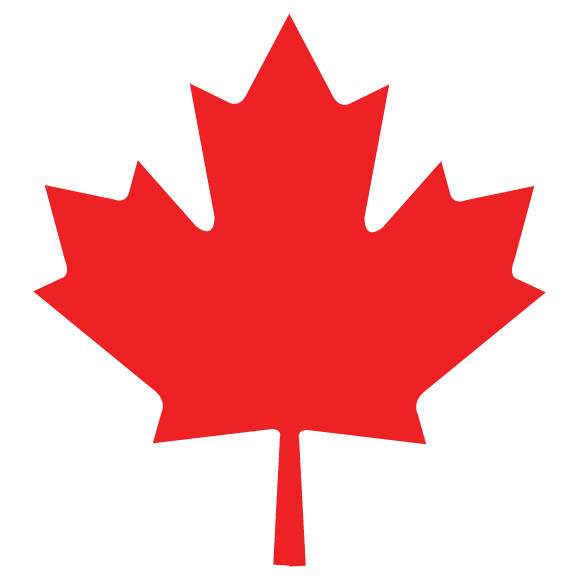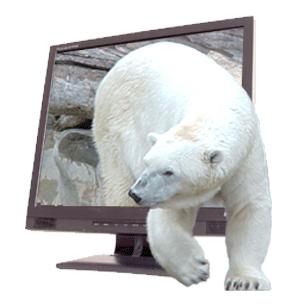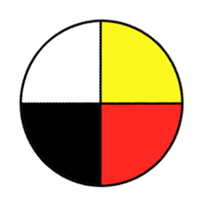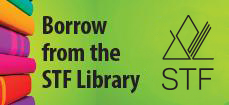R105323
During this Broadcast, students will explore the complex world of AI deep fakes. Through collaborative learning and interactive activities, they'll explore the technology behind deep fakes, understanding how artificial intelligence can be used to create highly convincing but fabricated content. Additionally, students will critically examine the ethical implications of deep fakes, while exploring real-world examples of its usage and impact. The session will last 45 minutes, providing a comprehensive learning experience for all participants.
Record posted/updated:
May 29, 2025
R014755
This resource provides Earth Science lab investigations that include background information, activities, student handouts and checkout questions. The activities promote scientific literacy by promoting the scientific method of asking a question, supporting it with evidence to make a claim and defend a position.
Record posted/updated:
March 2, 2022
R071731
This video program from the Greatest Discoveries with Bill Nye Series highlights the work of various astronomers including Copernicus, Kepler, Galileo, Halley, Herschel, Einstein and Hubble. Twentieth-century advancements in science and technology that further our understanding of gamma ray bursts, black holes, pulsars and quasars are identified. This program provides an historical overview of the development of scientific thought in relation to astronomy.
Record posted/updated:
November 28, 2018
R105333
In this broadcast, students will delve into the careers of the future, using the Sustainable Development Goals as a guiding framework to pinpoint current global challenges. They will contemplate potential emerging technologies capable of addressing these challenges and craft job titles that encompass the requisite skills for success in these yet-to-be-realized professions. The session will last 45 minutes, providing a comprehensive learning experience for all participants.
Record posted/updated:
May 29, 2025
R071732
This resource from the Thinking Scientifically About Controversial Issues series challenges students to confront scientific and social problems that offer few black-and-white choices. Through the use of 10 dilemmas from the fields of biology, chemistry, physics, Earth science, technology and mathematics, each question is presented in two parts: scientific background with possible resolutions and a reference list for further teacher reading; and a reproducible essay, questions and activities to guide students in debating and decision making.
Record posted/updated:
March 7, 2017
R007830
Ce livre biographique raconte l'histoire de David Saint-Jacques, un médecin et astrophysicien canadien. Le récit est suivi par une chronologie de la vie de Saint-Jacques et une liste d'astronautes canadiens dans l'espace.
Record posted/updated:
May 12, 2021
R071677
This video program is divided into three parts. Part One examines telescopes. Diagrams illustrate the difference between refractor and reflector telescopes. This section also highlights how space telescopes are providing images to scientists on space.
Part Two looks at space and space exploration. Scientists are devising ways to explore and colonize space that are cost effective. The Jet Propulsion Lab is exploring various options for propelling rockets into space. There is also discussion about Pluto and its status as a planet.
Part Three shows what goes on inside the sun. It discusses solar flares, solar radiation, sun spots, and their impact on earth. An accompanying lesson plan can be found online at http://school.discoveryeducation.com/teachersguides/pdf/earthscience/ds/discover_magazine_the_solar_system.pdf
Teachers are encouraged to use segments of the program that relate directly to curriculum outcomes.
Record posted/updated:
July 8, 2024
R103290
This kit from the Perimeter Institute uses the technology of a global positioning system (GPS) to introduce students to Einstein's theory of relativity. The resource also briefly examines other topics such as: satellite motion, geometry, energy and precision. Perimeter Institute kits are available free of charge; this kit includes a teacher's guide, a CD-ROM of teacher support materials and a five-minute classroom video on DVD.
Record posted/updated:
November 25, 2018
R053572
In this video, atoms are referred to as the building blocks of matter. Animations highlight the arrangement and models of atom. Additional topics include atomic theory, a model of an atom, an element, nucleus, protons, neutrons, electrons, atomic number, atomic mass, an electron cloud, isotope and the modern periodic table.
Record posted/updated:
December 3, 2021
R051857
In this video, students will learn that atomic bonds benefit living things every day. The animations illustrate the process of chemical bonding and the various types of bonds. Additional topics that are discussed include molecules, electron arrangement, valence electrons, compounds, ions, ionic bonds, covalent bonds, crystal, metallic bonds and organic compounds.
Record posted/updated:
December 3, 2021
R101038
Gizmos is a website of inquiry-based, online simulations for topics in Math and Science from Grades 3-12. A selection of simulations is available as part of the free trial, but access to the full library of simulations requires a paid subscription. A request must be submitted by email to receive a quote for a membership. Examples of the topics in the library include: ecosystems, chemical bonding and genetics.
Record posted/updated:
September 1, 2020
R047227
This video series focuses on the human body from cells to systems, including the reproductive and endocrine systems. Each DVD features real-world experiences, along with microphotography and graphics. Every program includes an easy-to-replicate, hands-on activity and an interview with an expert in a particular area of science.
Teacher's guides are included and feature additional information on the topic, vocabulary words, discussion questions, follow-up activities and lists of recommended books and Internet resources. The teacher's guides are available online at www.distributionaccess.com.
Please see the related resources below.
Record posted/updated:
July 8, 2024
R049581
Students use electricity every day, but they really do not understand where it comes from and how it works. This video program provides some of the early history of electricity and explains the difference between static and current electricity. Students will also learn about current, voltage, and resistance through a combination of graphics and illustrative footage.
Record posted/updated:
November 28, 2018
R071636
This video examines Mars. NASA's two robot explorers, Spirit and Opportunity, first landed on Mars in January 2004. The rovers were expected to function for the initial 90-Martian-day (sol) primary mission. Since that time, the Rovers have lasted 16 times longer and traveled 20 times farther. The two rovers continue to search for clues if Mars supported microbial life and if Mars once had water. Along with the Phoenix probe, Spirit and Opportunity continue to carry out missions designed by NASA.
Record posted/updated:
December 2, 2021
R047829
This book offers historical information about some of the scientific concepts and theories related to matter, motion, gravity, electricity, magnetism and substances. The concepts are organized into four sections: matter, chemistry, motion and forces.
Record posted/updated:
March 4, 2022
R105354
Join us for a unique opportunity, where a Let’s Talk Science education specialist will guide you and your class in a co-learning experience. During this 45-minute session, you’ll learn easy-to-implement strategies around Digital Literacy and the Sustainable Development Goals. At the same time, students will contemplate potential emerging technologies that address future challenges and craft job titles encompassing the requisite skills for success.
Record posted/updated:
May 29, 2025
R105368
This broadcast has been tailored to complement Travel4Climate, a student-led action project aimed at learning about climate change through the effects of transportation. In this broadcast, students will develop their skills of brainstorming, reflecting, and communicating as they explore how transportation impacts climate. This broadcast session will span a duration of 45 minutes, ensuring a comprehensive learning experience for all participants.
Record posted/updated:
May 29, 2025
R037056
The actions of chromosomes during mitosis, meiosis and fertilization, as discovered in 19th century Germany, are explained in this video. These microscopic findings, together with the rediscovery of Mendel's long-lost research in 1900, gave birth to the Chromosomal Theory of Heredity. Sex chromosomes, X-linked recessive traits, linkages, crossovers and gene mapping are also discussed.
Record posted/updated:
November 25, 2018
R071682
This book, produced by NASA and the National Council of Teachers of Mathematics (NCTM), contains activities that engage students in exploring aeronautic science and related mathematical concepts. Each activity includes a brief summary statement and a list of goals, prior knowledge and materials. This is followed by detailed notes on engaging the students, exploring ideas and extending and assessing student learning. A CD-ROM accompanies each book, offering additional resource pages, links and posters. Teachers are encouraged to select material from this resource that support science curriculum outcomes in the Flight and Space units.
Record posted/updated:
November 28, 2018
R037054
This episode tells the story of genetics from ancient times to its true scientific beginnings in the 19th century. Humorous animation and other creative visuals illustrate the unsuccessful efforts of Aristotle, Darwin and others to solve the age-old puzzle of heredity. The focus then shifts to Gregor Mendel, the obscure 19th C. Austrian monk whose plant experiments laid the foundation for the science of genetics. His laws of Random Segregation and Independent Assortment are clearly and entertainingly explained, then reinforced by a Moxy Fruvous song. For more information and resources specific to this video, visit http://www.crackingthecode.ca/ctc1.html
Record posted/updated:
November 25, 2018
R040489
This poster indicates the groupings of elements using a colour-coded key. The bottom half of the poster includes additional information about seven of the elements and their role in technology today and in the future.
The periodic table is available online at www.nrc-cnrc.gc.ca/eng/education/elements/index.html. On the website, there are tabs for an element index, element arrangement and an element glossary.
Record posted/updated:
July 8, 2024
R014396
This free website contains links to physics-related explanations and findings to popular questions. It includes resources such as activities, blogs, videos, and ask-a-physicist. It addresses topics such as waves, materials science, quantum mechanics and chaos theory. The site is supported by the American Physical Society.
Record posted/updated:
March 7, 2022
R103288
This Perimeter Institute kit uses student activities to highlight the creative, inquisitive, communicative and collaborative aspects of the scientific process. Perimeter Institute kits are available free of charge; this kit includes a teacher's guide, 8 photo cards, a DVD with short videos that support the activities and a CD-ROM with editable versions of the students worksheets found in the guide.
Record posted/updated:
November 25, 2018
R101036
This interactive website contains a wealth of information about the periodic table, incorporating a range of searches and datasets. Users may search for isotopes and possible compounds, plus see in-depth information on each element through a direct link to Wikipedia. The visible periodic table may also be reformatted to display more or less specific information, depending on the user's preference.
Record posted/updated:
July 31, 2019
R037055
The human genome sequence was the finish line for another famous race in genetics, which led to a historic White House press conference. The leaders of this epic effort, including Francis Collins, Craig Venter, Eric Lander, John Sulston and Sydney Brenner, explain its origins, how it was done and what it reveals so far about our book of life.
The major surprise was how few genes there actually are in the human genome. We compensate in part by using RNA splicing to create different proteins from the same gene. Having the complete sequence at hand has greatly simplified the search for new disease genes and created the new fields of genomics and bioinformatics. To illustrate all this, we focus on Chromosome 7 and one of its most fascinating stories, that of Williams Syndrome, which produces an unusual mix of mental deficits, strengths, musical talent and affability. We meet A.J., a Williams Syndrome kid in San Diego who plays a mean set of drums.
Record posted/updated:
July 8, 2024
R103289
This Perimeter Institute kit contains a DVD of animations that explain three of the most significant revolutions in science: general relativity, quantum mechanics and special relativity. Perimeter Institute kits are available free of charge. In addition to the DVD, this kit includes a teacher's guide and a CD-ROM with additional activities that support the content in the guide.
Record posted/updated:
November 28, 2018
R071687
This safety resource brings information together that is needed by administrators, planners, teachers and support staff to help them make sound decisions regarding science safety. It supports planning and action by providing information on safety legislation, standards and concerns, as well as example procedures for eliminating or minimizing hazards. A copy of this handbook was sent to all schools with Grades 8-12. Because workplace standards may change over time, users of this resource should check for updated information wherever there are references to national or provincial legislation.
Record posted/updated:
January 2, 2019
R048062
Science for English Language Learners is designed to assist teachers to implement inquiry-based science while increasing learning opportunities for English Language Learners (ELL). The book provides strategies for planning, teaching, assessing and extending learning. While the book is specifically designed for ELL students, many of the strategies can benefit all students in the classroom. Included in the book are lesson plans which include standards and objectives, background, materials, activities and a summary. Depending upon the grade level, charts and diagrams are also included in the lesson plan. The lesson plans provided will need to be adapted to address the Saskatchewan science curriculum outcomes.
The authors also provide educators with a sense of how it will look when strategies are incorporated for teaching English Language Learners in the classroom. If an educator is unfamiliar with English Language Learners, this book provides strategies for working with ELL students, how a second language is learned and connecting with families. Strategies to incorporate into daily teaching are discussed and while this is a science-related book, these strategies could be implemented in any area of teaching.
Record posted/updated:
July 8, 2024
R054795
The 1970s and 80s saw the invention of ingenious new ways to manipulate DNA, which remain the cornerstone of today's genetic revolution, including the Human Genome Project. We begin with a scientist/magician demonstrating six simple tricks with DNA. Using these as building blocks, the more complex technologies of DNA fingerprinting, DNA sequencing, and PCR (the polymerase chain reaction) are explained in an easy to understand way. The excitement of this fertile period is brought to life through the personal recollections of its leading innovators.
These key technologies gave scientists the first maps of the human genome, which in turn allowed them to hunt down human genes, with no prior knowledge of their location. This culminated in the 1989 discovery of the gene for cystic fibrosis, which was the finish line for an exciting international race. We are guided by Sir Alec Jeffries, the inventor of DNA fingerprinting; Hamilton Smith, who won a Nobel Prize for discovering the key tool of restriction enzymes; Michael Smith, who won a Nobel Prize for a DNA-based technique to create pinpoint mutations, and Lap-Chee Tsui, who led the Toronto team that won the race to the cystic fibrosis gene.
Record posted/updated:
July 8, 2024
R071698
This account of the Apollo 11 moon landing gives voice not only to astronauts Neil Armstrong and Buzz Aldrin, but also to the team of 400,000 people that contributed to the success of the mission. Thimmesh incorporates quotes and photographs from various people who work on the mission to put man on the moon. From the seamstress who put together 22 layers of fabric for each space suit to the engineers who created the head shield to protect the capsule upon its fiery re-entry, many are quoted. The story also belongs to the flight directors, software experts and others - their worries and concerns about this first quest to the moon.
Record posted/updated:
November 28, 2018
R037394
Beginning with its discovery in a gothic German castle, we follow the scientific surprises as DNA beat out protein, the more logical candidate, as the stuff of the gene. Joshua Lederberg pays tribute to the work of Oswald Avery, the Canadian-born scientist who first proved it was DNA and the impact this had on his own landmark discovery that bacteria have sex, i.e., exchange genetic material.
Two sets of clues led to the discovery of the double helix structure of DNA, one from physics and the other from chemistry. James Watson recounts how he and Francis Crick put these clues together for the first time. The poignant story of Rosalind Franklin, whose X-ray data they relied upon, is recounted by her closest colleague, Sir Aaron Klug. Four Nobel laureates are featured in the film, including Sydney Brenner, another founder of molecular genetics.
Record posted/updated:
July 8, 2024
R071734
This book explores the historical and cultural impact of the elements on humankind. Rather than outlining the different types of atoms making up each element and their properties and characteristics, the author uses narrative text to bring to light our cultural interactions with the nature and composition of matter. Teachers may find this resource to be a useful source of background information about the role of the elements in history and the relationship among science, technology, society and the environment (STSE).
Record posted/updated:
November 28, 2018
R103287
This Perimeter Institute kit explores what scientists know about the universe and how they have made their discoveries. Topics discussed include: black holes, the Big Bang theory, emission spectra, the expanding universe and CMB radiation. Perimeter Institute kits are available free of charge; this kit includes a teacher's guide, a CD-ROM with additional activities that support the content in the guide and a DVD containing multimedia lesson supports.
Record posted/updated:
November 28, 2018
R037057
We follow the steps by which the discovery of the double helix in 1953 quickly led to our understanding of how a gene produces a protein, using messenger RNA as the intermediary. The basics of transcription and translation are clearly explained using creative animation. Then in the 1960s came the actual cracking of the code that translates DNA codons into amino acids. We are guided by Sydney Brenner (the discoverer of the codon, messenger RNA and much else), Canada's own Nobel laureate, Michael Smith (in one of his last interviews) and Leroy Hood, the father of today's high-tech DNA lab.
This episode also covers the next leap forward - recombinant DNA or genetic engineering - and the initial alarm that this caused in the 1970s among the scientists themselves, which led to public protests against this new technology. Once these initial fears were dispelled, both the biotech industry and the new revolution in DNA technology began in earnest. Also features Nobel laureates Joshua Lederberg and James Watson.
Record posted/updated:
July 8, 2024
R016823
This compact resource explains the history, development and workings of the periodic table, including an individual entry for every known element. Concepts such as compounds, atomic structure, chemical bonds, reactions and radioactivity are also highlighted with brief summaries.
Record posted/updated:
January 11, 2019
R042731
Author Dava Sobel brings science to readers in this narrative as she looks at each planet in our solar system from various scientific and cultural perspectives. Throughout the book, she weaves together current scientific knowledge about our solar system with astrology, mythology, science fiction, art, music, poetry, biography and history. Chapters on the Sun and the Moon are also included. This book presents factual information in a nontraditional way.
Record posted/updated:
November 28, 2018
R035035
This episode examines the science of genetically modified crops and foods. It begins by explaining, through creative animation, the actual process by which a foreign gene is introduced into a plant. It then examines the actual benefits and risks of the two types of genes currently added to GM crops - the BT gene to fight insects and the gene that protects the plant against new, more environmentally friendly insecticides. Using documentary footage, along with animation, this film defuses some of the mythology and emotion that surrounds this subject. It features Canada's leading experts in this area, as well as farmers who grow GM crops.
Record posted/updated:
November 25, 2018
R053440
What happens when a small group of hardworking, sleep-deprived and chronically underfunded university students take on some of the brightest engineering minds in North America at NASA's Space Elevator Games? Follow the USST as they prepare for and compete at Edward's Airforce Base for NASA's top prize - $2 million dollars. Episode 1 follows the University of Saskatchewan Space Design Team as they prepare for competition. The story is told by the team members through candid interviews as they experience hardship, setbacks and many hurdles preparing for the deadlines for a contest that is rescheduled a number of times. This is a character-rich story of teamwork, perseverance and the absolute dedication to excellence. An great resource for illustrating team building that demonstrates an outstanding work ethic.
Record posted/updated:
July 10, 2019
R053441
This video follows the University of Saskatchewan's Space Design Team (USST) as they compete in NASA's Space Elevator Games. Episode 2 continues the trip to and arrival at Edwards Air Force Base in the Mohave Desert. The team arrives at the competition ready to reclaim their first place title and the prize of 2 million dollars. Have the challenges they have faced prepared them for all that could possibly happen or is the outcome beyond their control? However, despite their combined efforts, the team is unable to overcome a series of breakdowns and malfunctions and their design is unsuccessful. Despite the team's apparent failure, its members try to learn from the experience and leave already planning the following year's competition.
The video is an excellent resource for team building and teaching students what can be accomplished with teamwork, dedication and a strong work ethic.
Record posted/updated:
July 8, 2024
R071697
Slavin shows the process of how objects are changed from raw materials to the finished products. He uses common items that students are familiar with, such as baseballs. Each two-page spread describes how the object is made by breaking the process down into steps. Illustrations complement the text and show the technology behind the science. Slavin demonstrates the connection between science and technology in making objects. The book includes a table of contents, a glossary, suggestions for further research and an index.
Record posted/updated:
January 16, 2025
R071616
In July, Canadian astronaut Julie Payette rocketed into space and made history. When she met her colleague, Robert Thirsk, on board the International Space Station, it was the first time two Canadians had been in space at once.
Record posted/updated:
November 28, 2018
R054832
Reading the Book of Life was just the first step. The ultimate goal is to understand how it works. We are guided towards this new genetic horizon by Francis Collins and Craig Venter, the leaders of the two competing teams that first sequenced the human genome. The initial task is to separate out the genes from the other 98% or so of the genome that doesn't code for proteins, no easy feat since the genes themselves are split into even smaller bits (exons), which are also surrounded by DNA "noise". Three different gene finding techniques are explained. One method uses an RNA message to "tag" the gene that produced it. Another makes use of the codons that act as start and stop signals for the machinery of transcription. Still another method exploits the striking similarity between many of our genes and those of other creatures.
The next task is to work out the function of the proteins produced by these genes. Since many different proteins can be derived from the same gene, this a daunting long term project. Protein function is studied using experimental techniques such as "site-directed mutagenesis," which is explained by its inventor, Canadian Nobel laureate Michael Smith. The "holy grail" of genomics is to program computers to predict the function of a protein from the sequence of its gene - still a distant goal. Another challenge will be to work out which genes act together in networks to produce a "complex" trait. A key tool in uncovering these networks is the gene chip, which is explained in a visual, easy to understand way.
Small variations in our DNA play a crucial role in disease. The most important human diseases are caused by combinations of variant genes, interacting with environmental and lifestyle factors. These variant networks are far more difficult to track down than the single mutations that cause classic genetic diseases like cystic fibrosis. One way around this problem is to study isolated populations with a high incidence of a particular disease. One such group is the Cochin Jews of Israel, who suffer from a very high rate of asthma. The end result will be a new kind of medicine, based on genetic testing and prevention rather than after-the-fact diagnosis and treatment. This episode also features John Sulston, Eric Lander, Sydney Brenner and Joshua Lederberg.
Record posted/updated:
July 8, 2024
R042300
In this video, viewers learn about the history and development of electrochemical cells. It explains the production of electricity from chemical reactions, including oxidation-reduction. This program demonstrates various types of fuel cells, describing their chemistry, applications, benefits and drawbacks. It concludes with a discussion about the Hydrogen Age and the economic and environmental costs related to fuel cell efficiency.
Record posted/updated:
July 1, 2020



































































































































































































